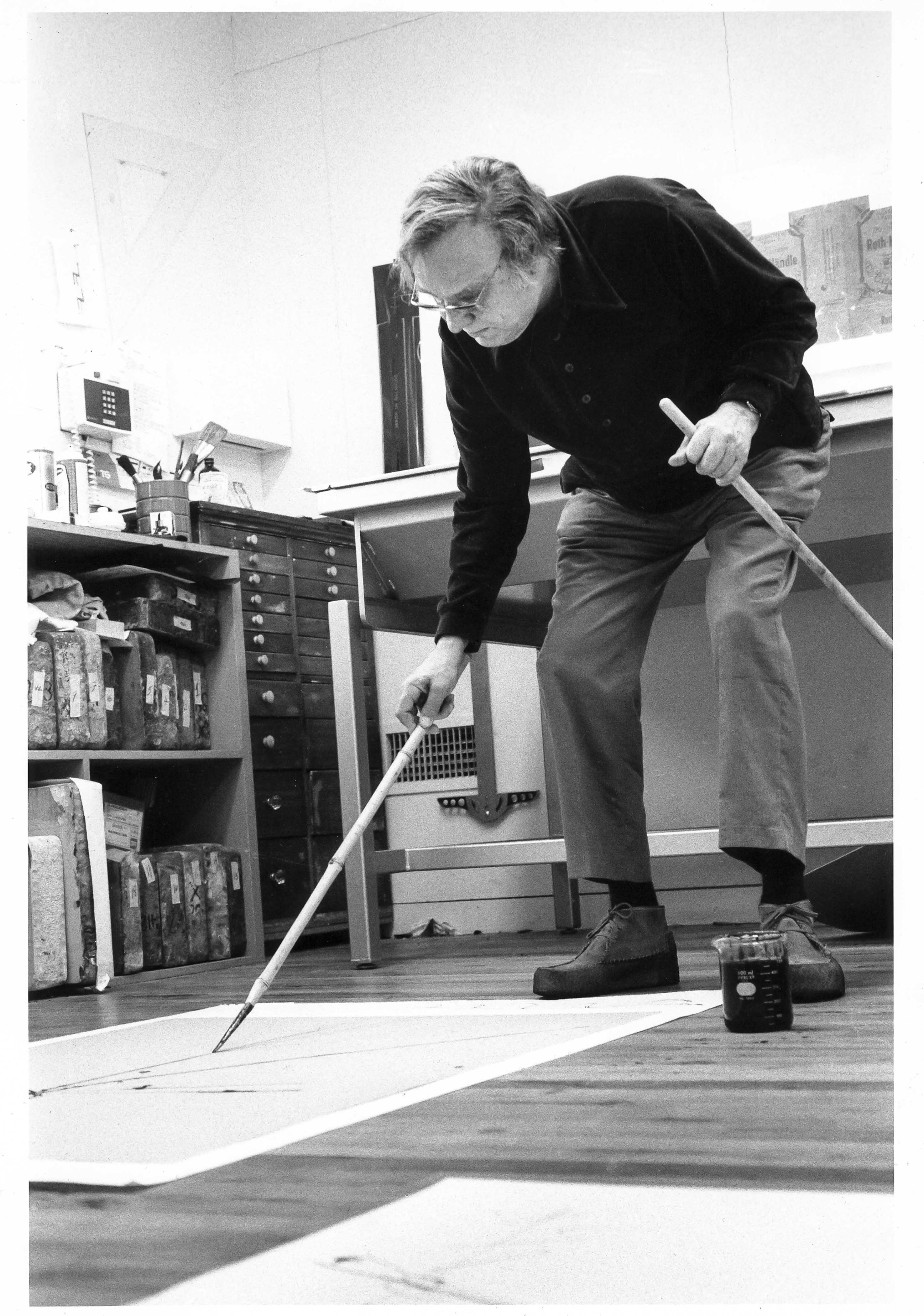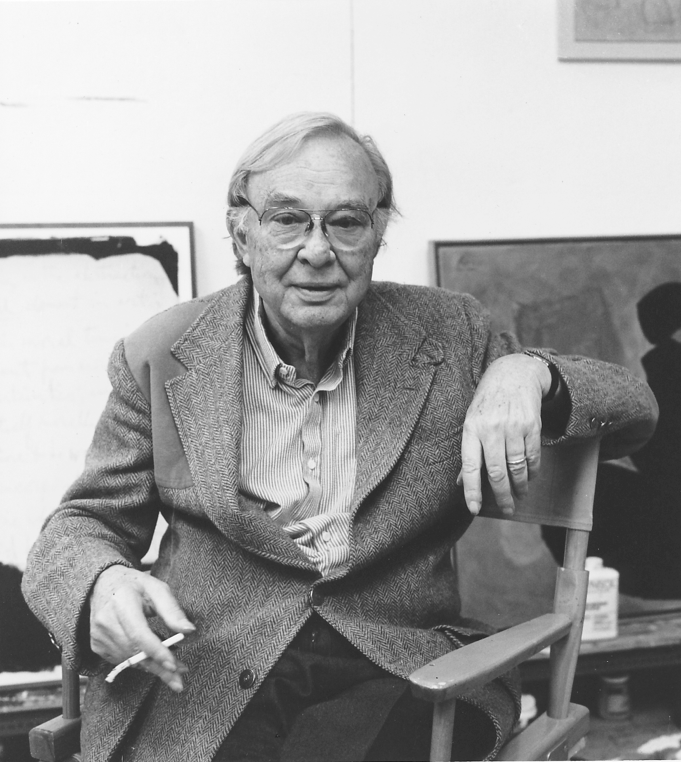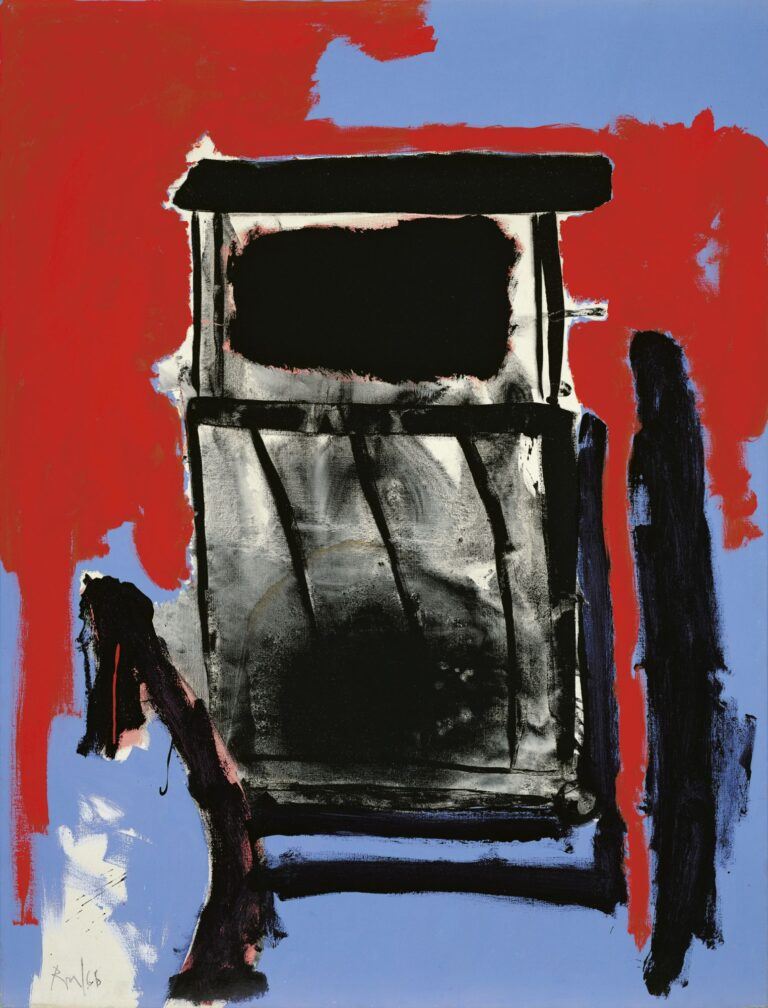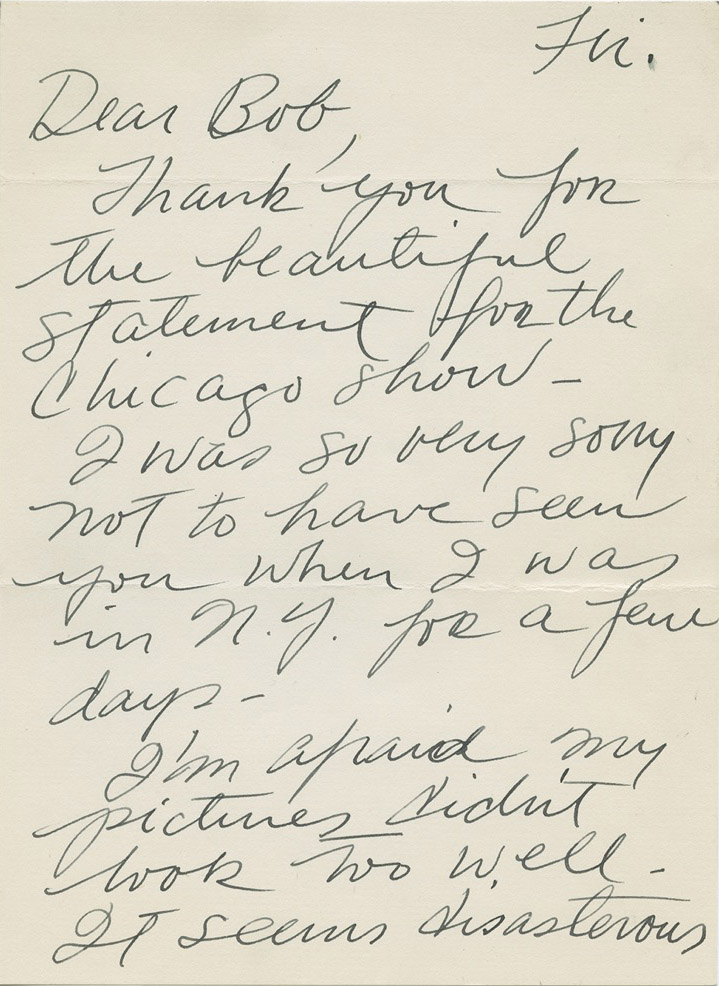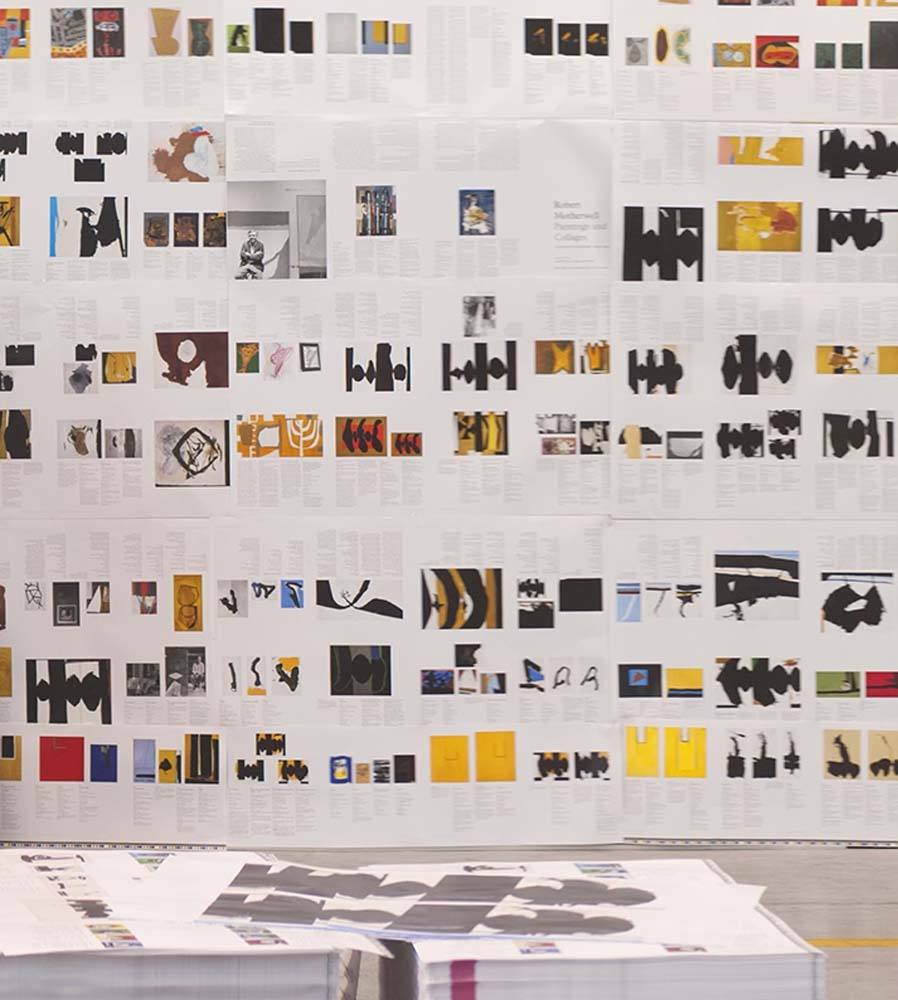Your browser is out-of-date!
Update your browser to view this website correctly. Update my browser now
Biography
Robert Motherwell was born in Aberdeen, Washington, on 24 January 1915. He spent most of his school years in California, where he graduated from Stanford University with majors in philosophy and literature in 1937. He did graduate work in philosophy at Harvard University and spent the 1939-40 school year in France. In 1940 he moved to New York and studied briefly at Columbia University, where he was encouraged by Meyer Schapiro to devote himself to painting rather than scholarship. After a 1941 voyage to Mexico with the Surrealist painter Matta, Motherwell decided to make painting his primary vocation. It was at this time that he began to do “automatic” drawings and that he painted his first mature pictures.
The next year, Motherwell began to exhibit his work in New York and in 1944 he had his first one-person show at Peggy Guggenheim’s “Art of this Century” Gallery. Beginning in the mid-1940s, Motherwell became the leading spokesperson for avant-garde art in America. He exhibited regularly at the Samuel M. Kootz Gallery and in group shows at museums throughout the United States. He lectured widely on abstract painting, and he founded and edited the Documents of Modern Art series. In 1948, he began to work with his celebrated Elegy to the Spanish Republic theme, which he continued to develop throughout his life. From 1950 to 1959, Motherwell also taught painting at Hunter College. At this time, he was a prolific writer and lecturer, and in addition to directing the influential Documents of Modern Art Series, he edited The Dada Painters and Poets: An Anthology, published in 1951.
In 1958, Motherwell was included in the “The New American Painting” exhibition at the Museum of Modern Art. That year he traveled to Spain and France, where he started his Iberia series. During the 1960s, Motherwell exhibited widely in both America and Europe and in 1965 was one of the first artists of his generation to be given a retrospective exhibition at the Museum of Modern Art.
In 1967, Motherwell began to work on his austere Open series. In 1970, moved to Greenwich, Connecticut, where he became deeply involved in printmaking. During the 1970s, he had important retrospective exhibitions in several European cities, and in 1977 he was given a major mural commission for the new wing of the National Gallery of Art, Washington, D.C.
During the 1980s, Motherwell undertook a number of monumental paintings, such as The Hollow Men series and The Grand Inquisitor, in which he explored new motifs, as well as some of his most heroic Elegy paintings. A major retrospective exhibition of his work toured a number of American cities in 1983-84, and the last retrospective mounted in his lifetime was shown in Mexico and Texas in 1991.
Robert Motherwell continued to produce significant art right to the end of his life. He died in Provincetown, Massachusetts on July 16, 1991.



